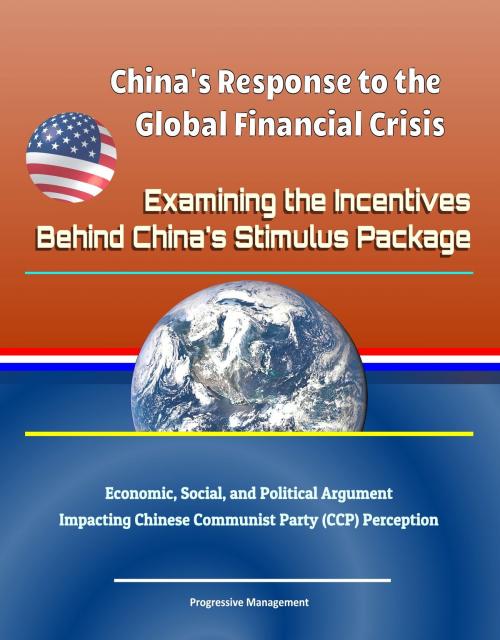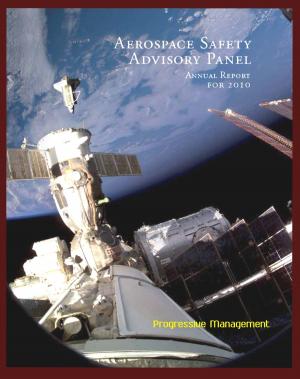China's Response to the Global Financial Crisis: Examining the Incentives Behind China's Stimulus Package - Economic, Social, and Political Argument Impacting Chinese Communist Party (CCP) Perception
Nonfiction, History, Asian, China, Business & Finance, Economics, Economic History| Author: | Progressive Management | ISBN: | 9780463628164 |
| Publisher: | Progressive Management | Publication: | September 2, 2018 |
| Imprint: | Smashwords Edition | Language: | English |
| Author: | Progressive Management |
| ISBN: | 9780463628164 |
| Publisher: | Progressive Management |
| Publication: | September 2, 2018 |
| Imprint: | Smashwords Edition |
| Language: | English |
This mid-2018 report has been professionally converted for accurate flowing-text e-book format reproduction. This thesis examines the incentives behind China's decision to implement its aggressive $585 billion economic stimulus package in response to the global financial crisis, or GFC. The thesis assesses the explanatory power of economic, social, and political causal factors to explain China's decision. The main finding of this thesis combines all three factors to demonstrate that China's stimulus package was most likely implemented because the Chinese Communist Party (CCP) perceived that it was necessary to protect its regime. The economic argument demonstrates how China's government had to resort to an investment-led stimulus plan to generate economic growth through domestic demand after the GFC severely damaged China's export sector. The social argument establishes how tens of millions of people left unemployed by the GFC felt marginalized by the government due to the country's inequitable economic growth, which was perceived to have primarily benefitted the regime. This increased the potential for social instability, which would have been directed at the CCP. Lastly, the political argument determines how the regime was under significant political pressure to meet domestic and international expectations to sustain economic growth throughout the GFC. These findings underscore how the CCP prioritizes regime survival over long-term economic development.
Prior to the 2008 global financial crisis, China was in the process of enacting significant reforms designed to improve the efficiency of its market economy. Among these reform efforts, China forced its inefficient state-owned enterprises to downsize, furloughed millions of state workers, and spent trillions of yuan to restructure and improve the solvency of its banking sector. In response to the crisis, China initially implemented an aggressive 4 trillion yuan (over $585 billion) economic stimulus package in November 2008, which ballooned to over double that amount (or nearly triple by some accounts) by 2010. China's stimulus package was among the fastest issued and largest in size in the world, helping its country to sustain economic growth while most other countries endured deep recession. Funds from the stimulus package were primarily allocated to large infrastructure projects that would employ millions of laid off workers. Although the stimulus package provided a temporary economic boost within China, it impeded the progress of its previous reform efforts well after the crisis subsided. The package's loose monetary policy and increased bank credit, coupled with urgent state messages to spend, implanted a moral hazard into the banking sector, reversed efforts to make state-owned enterprises more efficient, and made China's economy increasingly reliant on investment—all putting China on a track toward unsustainable levels of debt.2 With such stark consequences to China's stimulus package, what were the incentives behind China's decision to implement its aggressive economic stimulus package after the global financial crisis?
This mid-2018 report has been professionally converted for accurate flowing-text e-book format reproduction. This thesis examines the incentives behind China's decision to implement its aggressive $585 billion economic stimulus package in response to the global financial crisis, or GFC. The thesis assesses the explanatory power of economic, social, and political causal factors to explain China's decision. The main finding of this thesis combines all three factors to demonstrate that China's stimulus package was most likely implemented because the Chinese Communist Party (CCP) perceived that it was necessary to protect its regime. The economic argument demonstrates how China's government had to resort to an investment-led stimulus plan to generate economic growth through domestic demand after the GFC severely damaged China's export sector. The social argument establishes how tens of millions of people left unemployed by the GFC felt marginalized by the government due to the country's inequitable economic growth, which was perceived to have primarily benefitted the regime. This increased the potential for social instability, which would have been directed at the CCP. Lastly, the political argument determines how the regime was under significant political pressure to meet domestic and international expectations to sustain economic growth throughout the GFC. These findings underscore how the CCP prioritizes regime survival over long-term economic development.
Prior to the 2008 global financial crisis, China was in the process of enacting significant reforms designed to improve the efficiency of its market economy. Among these reform efforts, China forced its inefficient state-owned enterprises to downsize, furloughed millions of state workers, and spent trillions of yuan to restructure and improve the solvency of its banking sector. In response to the crisis, China initially implemented an aggressive 4 trillion yuan (over $585 billion) economic stimulus package in November 2008, which ballooned to over double that amount (or nearly triple by some accounts) by 2010. China's stimulus package was among the fastest issued and largest in size in the world, helping its country to sustain economic growth while most other countries endured deep recession. Funds from the stimulus package were primarily allocated to large infrastructure projects that would employ millions of laid off workers. Although the stimulus package provided a temporary economic boost within China, it impeded the progress of its previous reform efforts well after the crisis subsided. The package's loose monetary policy and increased bank credit, coupled with urgent state messages to spend, implanted a moral hazard into the banking sector, reversed efforts to make state-owned enterprises more efficient, and made China's economy increasingly reliant on investment—all putting China on a track toward unsustainable levels of debt.2 With such stark consequences to China's stimulus package, what were the incentives behind China's decision to implement its aggressive economic stimulus package after the global financial crisis?















